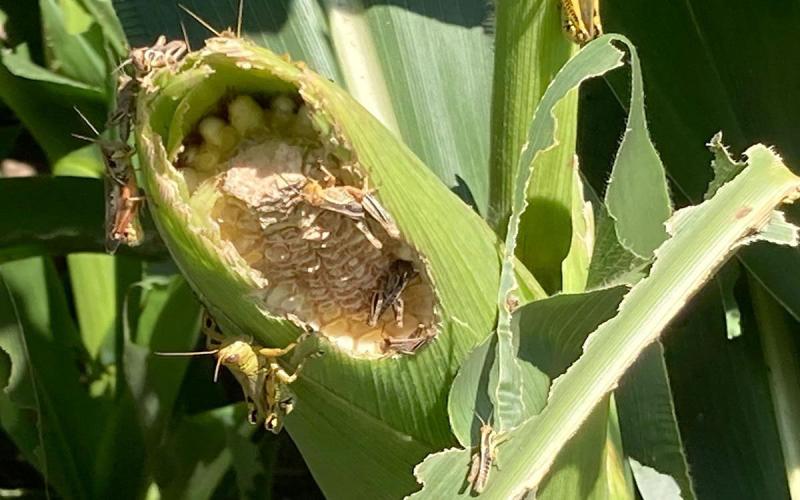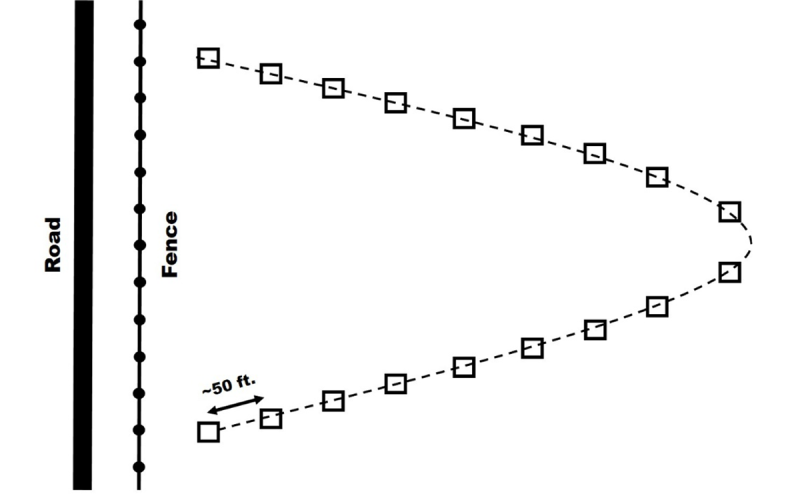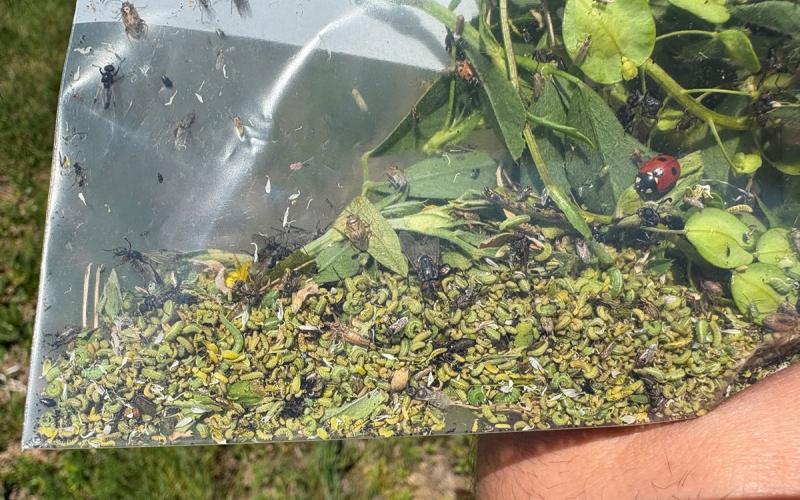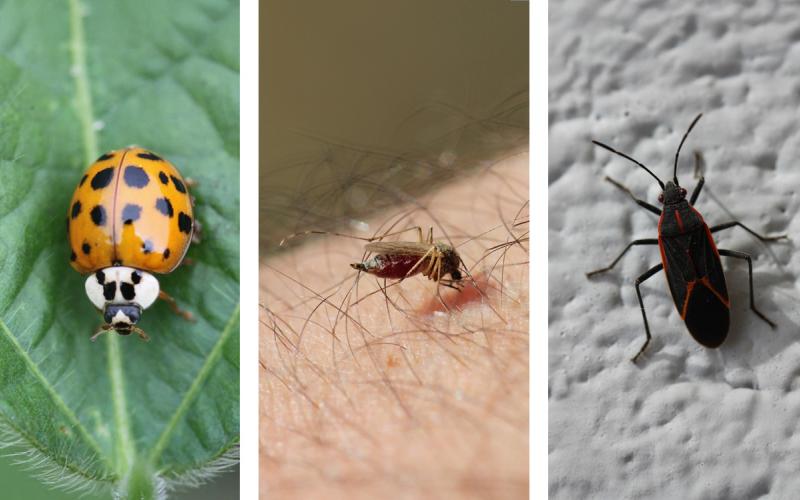
Written collaboratively by Adam Varenhorst, Philip Rozeboom, Patrick Wagner, and Brad McManus.
Recent reports of crop loss along field edges indicate that grasshopper populations in some areas of South Dakota are well above threshold. Although grasshoppers may not be obvious in a field, mowing and normal seasonal decline of grass along field edges can force grasshopper populations to move in search of new food sources. Unfortunately, crops are often the target of these moving populations.
Crops that were planted later than normal are at higher risk for grasshopper defoliation. It is partly because the plants are not as robust at this time in the season and large populations of grasshoppers can cause a higher percentage of defoliation than at later growth stages. In some cases, entire plants may be consumed.
It’s important to remember that large grasshopper populations will start on field edges and then move into the field. Scouting should focus on the border rows first. In some cases, insecticide management around field edges can effectively reduce the grasshopper populations and prevent entire field applications. However, these treatments must occur as the grasshoppers are moving into the crop and not after they have already become established. As a general reminder, grasshoppers are easier to manage during the nymphal stage due to their smaller size. Adult grasshoppers are harder to kill and often require a higher labeled rate. As a reminder, always check your product label to ensure that you are using the correct rate. In addition, we do not recommend using the lowest rate labeled for grasshopper management. For a list of products labeled for grasshopper control, refer to the most-recent South Dakota Pest Management Guides.
Scouting

The threshold for grasshoppers are 21-40 grasshoppers per square yard in the field margins or 8 grasshoppers per square yard within the field.
Most of the observed grasshopper populations are composed of adults, but we are still receiving some reports of nymph grasshoppers.
To scout for grasshoppers, we recommend traveling in a horseshoe pattern and stopping approximately every 50 feet to determine the number of grasshoppers in a square yard (Figure 1).
To do this, visualize an approximate square yard around your feet and simply count the number of grasshoppers present in that area. Repeat this process until you are back to the edge of the field.


